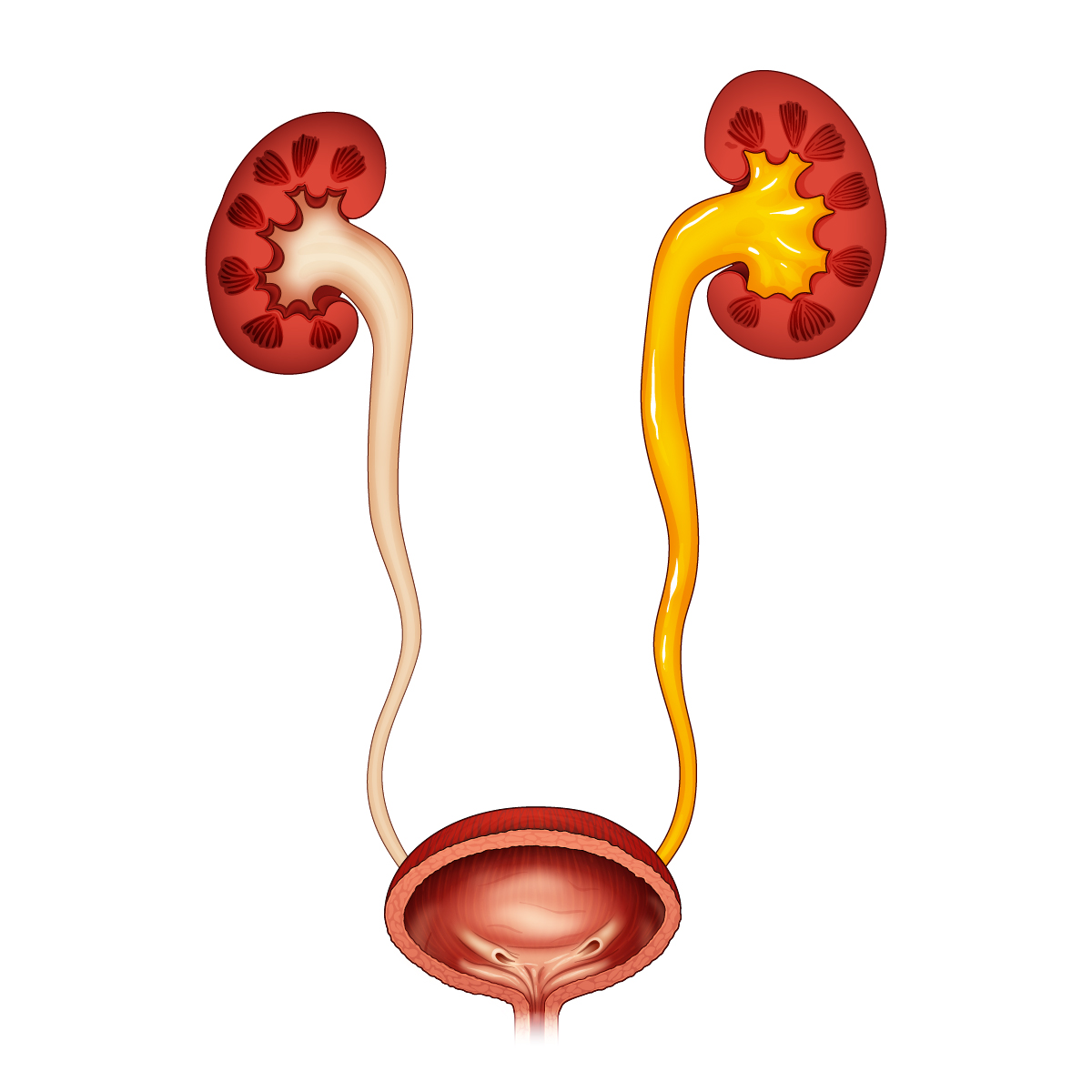Understanding VUR grade 3 and its treatment options
What is VUR grade 3?
VUR grade 3 is similar to grade 2 where urine travels all the way up the ureter and enters the part of the kidney where urine is collected before it drains to the ureter (renal pelvis). However, in grade 3 the ureters and renal pelvis appear abnormal in size or shape.
The likelihood of spontaneous resolution varies according to a child’s age, grade of VUR, and whether the VUR is on one ureter or both.
VUR Resolution Chart – Percent Chance of Reflux Resolution After A Specified Number of Years1
American Urological Association
| Age | 1 Year | 2 Years | 3 Years | 4 Years | 5 Years |
| Grade 3 – One Ureter | 0-24 months old | 21.4% | 38.2% | 51.5% | 61.9% | 70.0% |
| Grade 3 – One Ureter | 2-5 years old | 13.4% | 25.0% | 35.1% | 43.8% | 51.3% |
| Grade 3 – One Ureter | 5-10 years old | 10.8% | 20.5% | 29.1% | 36.7% | 43.6% |
| Grade 3 – Both Ureters | 0-24 months old | 12.7% | 23.8% | 33.5% | 41.9% | 49.3% |
| Grade 3 – Both Ureters | 2-5 years old | 7.0% | 13.5% | 19.6% | 25.2% | 30.5% |
| Grade 3 – Both Ureters | 5-10 years old | 2.6% | 5.2% | 7.7% | 10.1% | 12.5% |
More severe grades of reflux are associated with lower rates of spontaneous resolution and a higher incidence of renal scarring.2
VUR grade 3 treatment options
There are basically four ways your child’s paediatric urologist or doctor may decide to treat your child, depending on the severity of your child’s VUR. The higher the grade, the more likely that treatment is needed. Your VUR grade 3 treatment options are watchful waiting, antibiotics, endoscopic treatment with Deflux, or surgery.3
Deflux is indicated for the treatment of children with VUR.















